Ban Huay Pu Keng Long Neck Village or Kayan Village
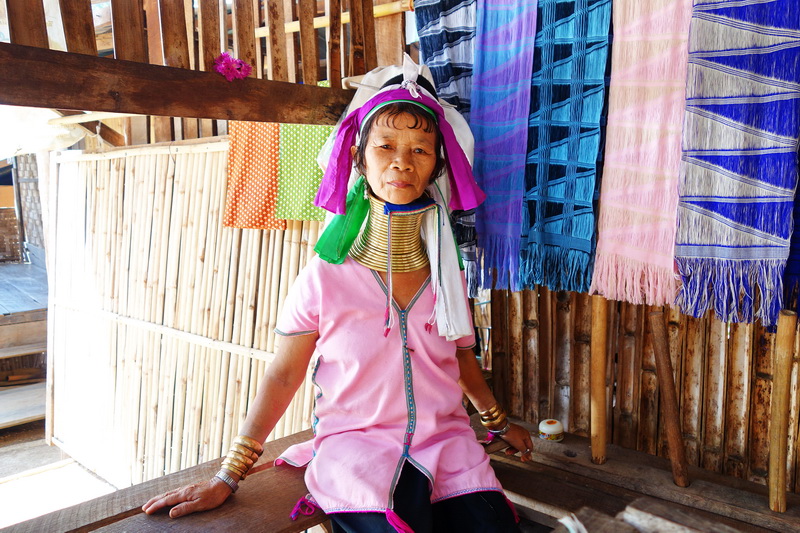
Huay Pu Keng Long Neck Village: A Cultural Sanctuary in Mae Hong Son
Discover the heart of Huay Pu Keng Long Neck Village, a refuge for the Kayan people and a beacon of cultural preservation in Mae Hong Son Province.
Introduction to Huay Pu Keng Long Neck Village
Huay Pu Keng Long Neck Village, often referred to as Ban Huay Pu Keng or Kayan Village, is a unique settlement located about 20 kilometers from Muang Mae Hong Son city. This village, home to the Kayan people—known for their iconic long-necked women—is nestled in the lush surroundings of the Pai River. Unlike many tourist destinations, this village offers an authentic glimpse into the lives of its residents, who are predominantly refugees from Myanmar.
While Ban Nam Piang Din is sometimes mistakenly equated with Huay Pu Keng, the two are distinct yet geographically close. Both offer fascinating insights into the cultures of the Kayan and Kayaw ethnic groups, but Huay Pu Keng stands out for its river access and immersive cultural experiences.
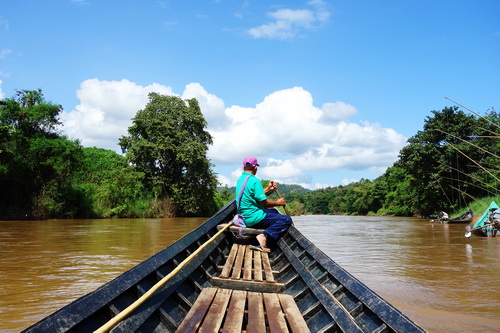
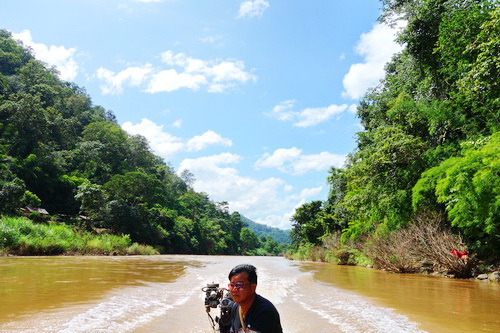
A Journey into the Village
To reach Huay Pu Keng, visitors embark on a scenic long-tail boat ride from the Huai Dua Pier. The 30 minute-long journey along the Pai River is an adventure in itself, offering views of dense bamboo forests, majestic fig trees, and wildlife such as waterfowls foraging along the banks. Upon arrival, you’re greeted by a blue wooden sign bearing the name “Long Neck Village (Kayan)” and Ban Huay Pu Keng in Thai, marking the start of a memorable experience.
The village, surrounded by jungle, is serene and isolated—there is no cell signal or electricity, creating an environment that feels untouched by modernity. The community consists of stilted wooden houses, a church, a school, and various family dwellings. While some women wear the iconic neck rings, others display elongated ear lobes, and some dress in simple attire, offering a spectrum of cultural expression.
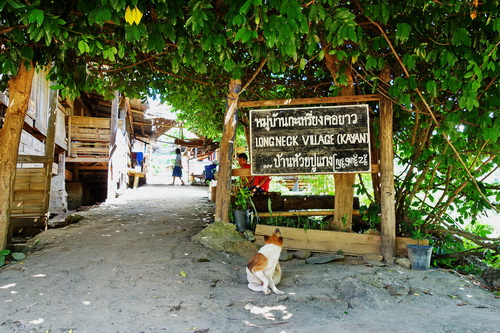
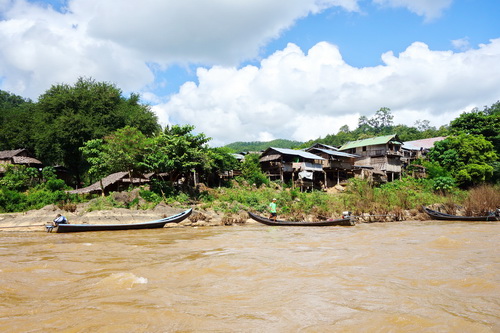
The Kayan People: Tradition and Resilience
The Kayan women’s brass neck rings are both a symbol of beauty and a reflection of their heritage. These coils, weighing up to 5 kilograms, were traditionally believed to enhance attractiveness and provide protection against tiger attacks. However, in recent years, some younger women have chosen to forgo this practice as modern influences reshape cultural norms.
Currently, around 247 Kayan nationals reside in the village. Many are refugees who fled Myanmar due to political conflict and persecution. Unlike traditional refugee camps, Huay Pu Keng was established as a tourism village, offering an alternative livelihood through cultural tourism. However, life in the village is not without challenges. Residents cannot travel freely outside the designated area without permission and are reliant on visitors for income through the sale of handicrafts such as necklaces, clothing, and bags.
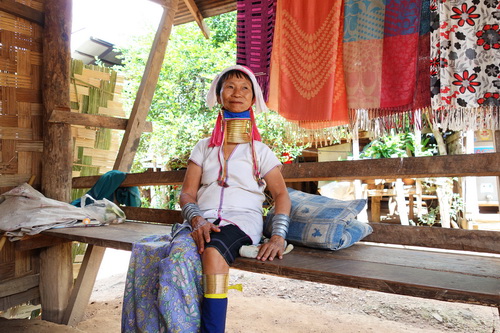
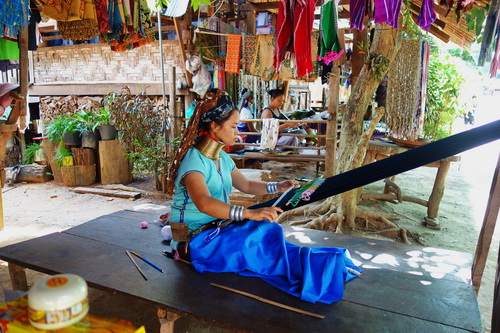
Immersive Experiences in Huay Pu Keng
Visitors to Huay Pu Keng can partake in a range of activities that bring them closer to the culture and daily life of the Kayan people:
- Handicrafts: Learn traditional weaving techniques or carve wooden dolls under the guidance of skilled artisans.
- Cultural Discussions: Sit with the villagers to understand the significance of their traditions, from the neck rings to their spiritual beliefs.
- Nature Walks: Explore the surrounding jungle trails and the Pai River, soaking in the tranquil beauty of the area.
Spending a night in the village provides an opportunity to enjoy traditional Kayan meals, engage in cultural exchanges, and witness the village’s quiet beauty under a starlit sky.
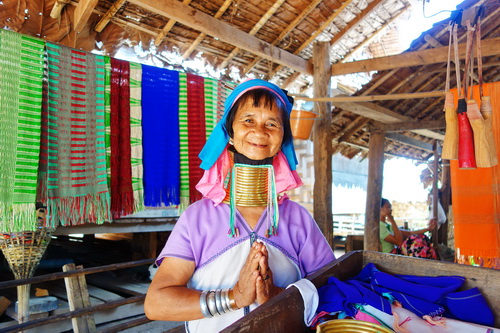
They are pretty friendly and willing to pose a photo upon requst.
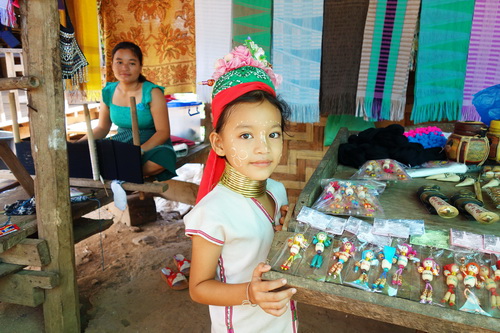
The children peeked shyly at the visitors from the balcony of their wooden stilted home.
Moving Beyond the “Human Zoo” Narrative
The villagers are in fact Burmese refugees who fled the persecution of minority groups in Burma. Instead of living in refugee camps, as many people do, the Thai government decided to create several tourism villages, to make money from the unusual ‘long necks’ of the refugee women. Many families are here, unable to leave as they are still refugees, making a small living from tourism. They cannot travel out of their designated area, and must stay in the provincial managed locations unless they had permission from their District Office.
Criticism often labels villages like Huay Pu Keng as “human zoos,” where cultural practices are commodified for tourism. However, the villagers are actively working to redefine their identity and move towards sustainable tourism models that emphasize dignity and mutual respect.
Visitors play a crucial role in this transformation by engaging thoughtfully with the community. Instead of simply taking photos, tourists are encouraged to learn about the Kayan people’s history, traditions, and hopes for the future. Staying overnight in guesthouses built by the villagers allows for deeper connections and a more meaningful understanding of their lives.
The most important thing is that, as a visitor, you treat the place with respect as a village and not as a ‘human zoo’.

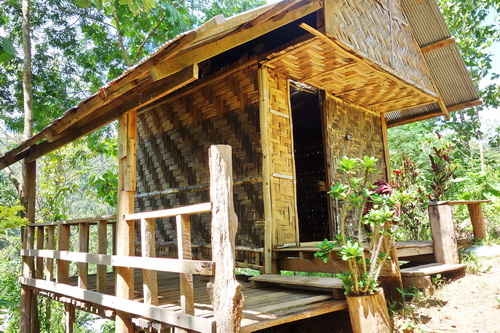
It is possible to stay the night in Huay Pu Keng in guest houses built by the residents of Huay Pu Keng. Most tourists pay quick visits to the Kayan villages, take a few photos of the women and leave without getting to know anything about the Kayan people: why they are in Thailand, why they wear the rings, what remains of their traditional culture and beliefs, what are their hopes for the future?
Be different……Experience life in this unique village, stay in their new guest houses overlooking the river, share their traditional food and spend time talking to these very special people.
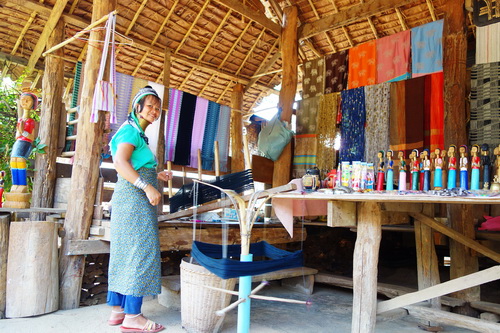
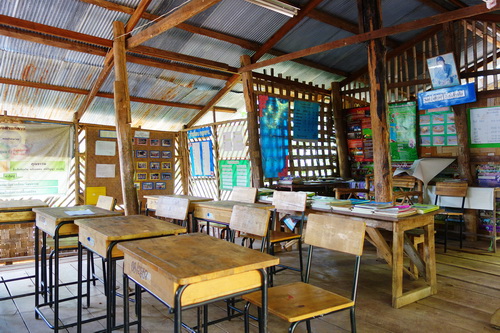
Getting to Baan Nam Phiang Din and Entrance Fee
Reaching Huay Pu Keng begins with a 30-minute drive from Mae Hong Son Town to the Huai Dua Pier. From there, a long-tail boat ride along the Pai River takes approximately 30 minutes and costs around 600–700 baht per boat, which accommodates up to 7 people.
For those who prefer road access, driving along Highway 108 to Rural Road 3018 and crossing the Pai River via a short ferry ride is another option. This route provides scenic views and a closer connection to the region’s natural beauty.
Baan Huai Dua Pier open daily from 9:00 to 17:00 am
Entrance Fee : Pay 250 THB for entrance to the village.
Our services :
- 4 Days All Highlights Mae Hong Son (Private group)
- 4 Days Package Tour Pai – Mae Hong Son Loop (Private group)
- 4 Days Package Tour Mae Chaem – Mae Hong Son – Pai (Private group)
Long Neck Village Baan Nam Phiang Din Map




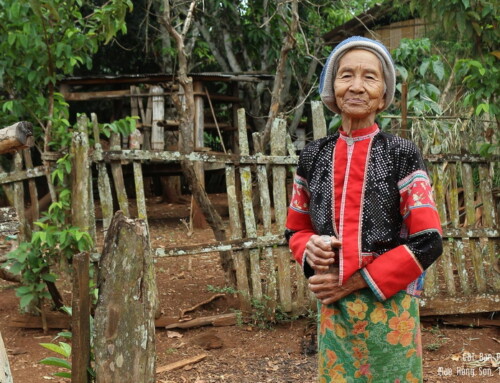

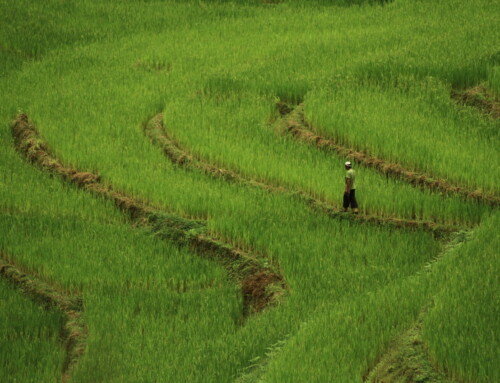

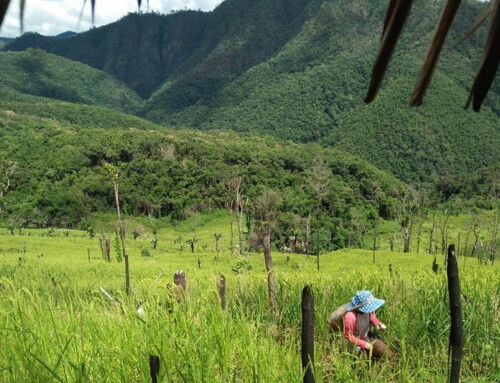



I’m going in October. How much is the short ferry ride to the village